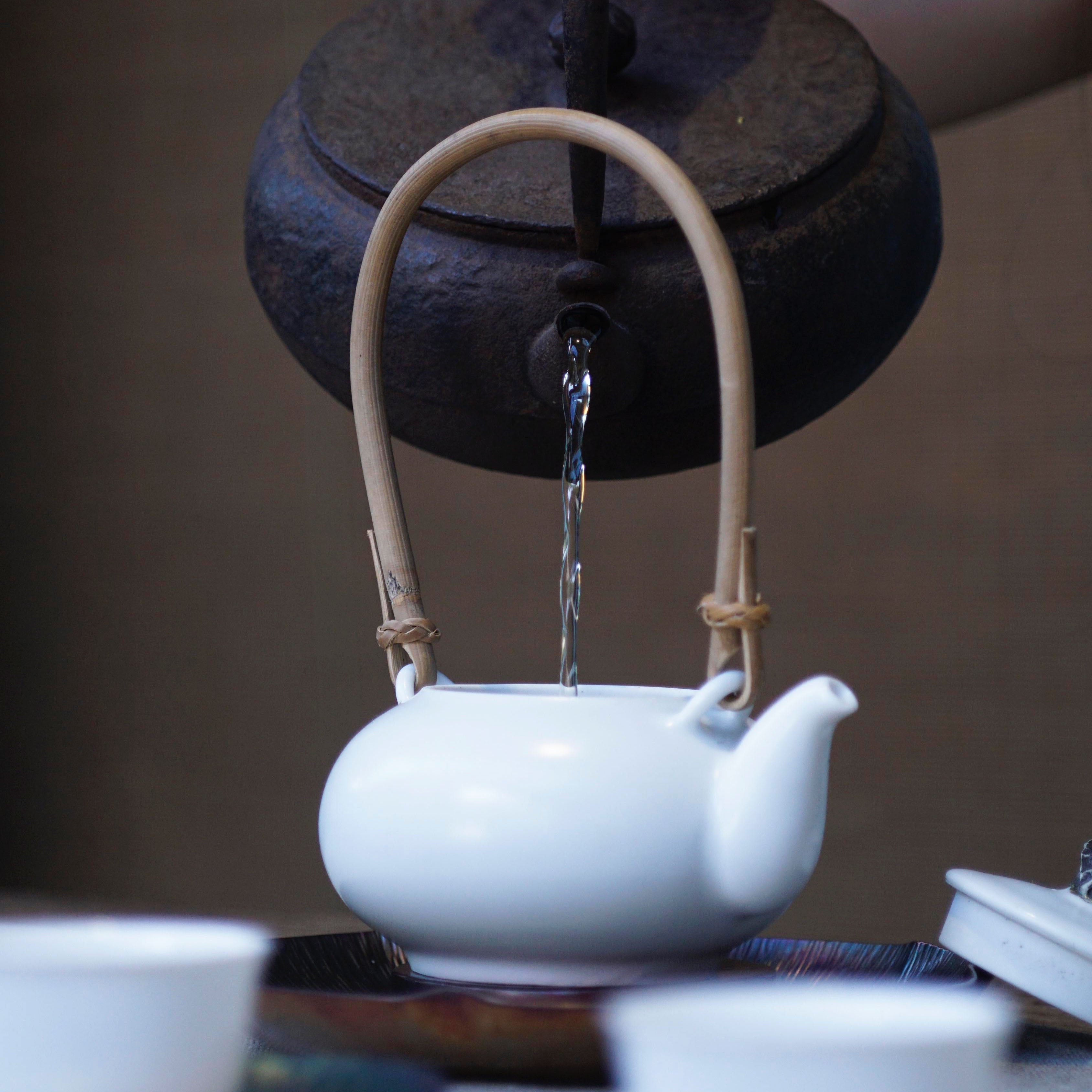
We are often told that when steeping loose leaf teas, it is correct to briefly rinse the leaves first and then discard the infusion. Only after this, should we move on to the first ‘real’ steep. We have heard quite a few arguments in favour of doing a rinse, however, in our opinion, some are more valid than others. Are there any arguments against doing a rinse? Some say it is just an unnecessary extra step. Or that you are throwing away a perfectly good bit of tea. Have a read and decide for yourself.
The basics
A rinse and discard is usually just called a rinse, to keep things brief. Sometimes also known as washing or blanching, this all refers to the same thing. A rinse generally means we are using water just off the boil, or at the very least the same temperature as what we would use in the brewing process for that tea. Pour the water from a slightly higher than normal height to really make sure the leaves are getting swished around. The length of the rinse should be quick, we suggest anywhere between 5 to 10 seconds.
Below we outline the arguments for rinsing tea in order of increasing validity, the top argument being least valid, the bottom one most valid.
Note that the last three arguments are no longer relevant when brewing Western style.
Pesticides
An umbrella term that includes insecticides and herbicides. This is probably the reason most often cited in favour of a rinse. However, it also happens to be the least valid one. First things first. Pesticides are usually applied late spring or summer, and at lower elevations. As such, most winter and spring teas are free of pesticides. Summer, and to a lesser extent fall, teas may contain pesticides. However, these are primarily absorbed through the root system and then enter the cell structures. Therefore, a quick rinse will do nothing to wash them away. In addition, most pesticides are non-water soluble, meaning they will not be extracted into your rinse, nor your brew in subsequent infusions. High elevation teas rarely see pesticide application. Pesticides are of course a meaningful concern, but rather than rinsing, this should be addressed through buying from suppliers that you feel you can trust and those that deliver the quality they promise.
Caffeine
Studies have shown that caffeine is extracted from tea leaves at a fairly linear progression. Figures differ significantly, but as an average we can assume at a rate of roughly 10% per 30 seconds. Higher temperature water speeds up the extraction. As such, we can see that a quick 5 to 10 second rinse will do very little to decaffeinate your tea, perhaps washing away no more than 2-5% at best.
Tea foam
Foam, aka froth or bubbles, is created when the naturally present saponin, pectin and sugar in the tea leaves come into contact with hot water. The first contact tends to produce the largest amount of foam. Contrary to some theories, there is absolutely nothing wrong with foam. In fact, anecdotal evidence suggests that foam may have antibacterial and anti-inflammatory effects. According to personal preference, you may rinse away foam, but just remember that this is not required.
Ceremony
Part of the beauty of tea is its history and tradition. The gongfu tea ceremony being a good example. When beginning the brewing process with a rinse, you are initiating the release of aromas and getting a preview of what that tea will have to offer.
Impurities
This refers to any particles other than tea leaves that end up in the brew. Mostly this is dust, accumulated either during a sub-optimal production process or through improper storage. Generally speaking, impurities are unlikely to have much impact on taste. However, many people prefer to wash them out with a quick rinse as this may a psychological effect whereby the tea is perceived to taste more clean and thus increase drinking satisfaction.
Fannings aka tea dust
Fannings are small, broken pieces of tea leaf, sometimes so fine that they are also known as tea dust. They are usually created during low-skill processing, handling and transportation. For teas pressed into cakes or bricks, such as pu’er, additional fannings are created when breaking off pieces in preparation for brewing. Fannings have a proportionately higher surface area compared to whole leaves and thus infuse faster. This can lead to a strong or uneven brew, as well as bitter taste, in the first one or two steeps. As with impurities, rinsing can help flush out some of the fannings.
Heating your teaware
The teaware used in the preparation of your tea will likely be room temperature. If you skip the rinsing step and go directly to the brewing phase, the teaware will absorb heat from the water, resulting in a less than optimal brewing temperature overall and thus weaker infusion. By doing a quick rinse, it will help pre-heat the teaware. Alternatively, you can also just douse the teaware with hot water first, then commence proper brewing.
Awakening the tea leaves
This applies to all compressed teas, such as cakes and bricks, as well as tightly rolled oolongs. Doing a quick rinse allows the leaves to absorb some water and slowly start unfurling. Be sure to let them rest a little while after discarding the rinse in order to allow the absorbed water to evenly permeate throughout the leaf. After some of this initial opening up of the leaves, the first steep should now have a larger surface area to work with. This will result in decreased steeping time, as well as a more even and complex infusion.
Conclusion
Above we have outlined some arguments for doing a rinse. However, please remember, that there is no right or wrong here. Hence why this remains such an inconclusive issue. Ultimately, taste is a personal experience and you should simply follow those steps that bring you the most enjoyment when drinking tea.
-
What's next?
Are you keen to put your new knowledge to the test? We recommend comparing a rinsed and un-rinsed first infusion for a ball-rolled oolong like our Si Ji Chun or Cui Yu. Notice the difference a quick rinse can make to the flavour of the first infusion by awakening and opening up the leaves. Also, these two teas are our best value daily drinkers, a perfect entry point into the world of oolong.
Subscribe and get US$10!
Did you enjoy reading this article? Perhaps even learn something new? If so, we'd love it if you joined our newsletter so that we can occasionally reach out to let you know about our fresh tea harvests and new educational content. Also, we'll send you a US$10 discount coupon as a thank you for joining!

Leave a comment